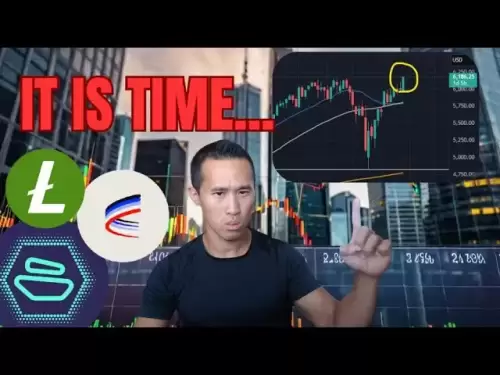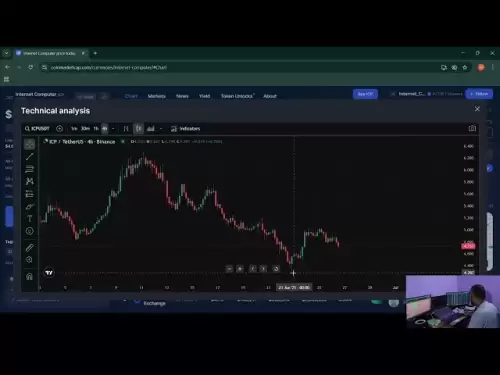-
 Bitcoin
Bitcoin $107,247.2038
-0.18% -
 Ethereum
Ethereum $2,424.7947
0.34% -
 Tether USDt
Tether USDt $1.0003
-0.02% -
 XRP
XRP $2.1171
-3.33% -
 BNB
BNB $645.6618
0.06% -
 Solana
Solana $141.5898
-1.32% -
 USDC
USDC $0.9998
0.00% -
 TRON
TRON $0.2710
-0.41% -
 Dogecoin
Dogecoin $0.1602
-2.99% -
 Cardano
Cardano $0.5553
-2.28% -
 Hyperliquid
Hyperliquid $36.3019
-2.42% -
 Bitcoin Cash
Bitcoin Cash $491.7212
2.04% -
 Chainlink
Chainlink $13.0810
-0.23% -
 Sui
Sui $2.6080
-5.06% -
 UNUS SED LEO
UNUS SED LEO $9.0040
-0.05% -
 Stellar
Stellar $0.2350
-3.06% -
 Avalanche
Avalanche $17.2294
-2.31% -
 Toncoin
Toncoin $2.8075
-1.05% -
 Shiba Inu
Shiba Inu $0.0...01121
-3.43% -
 Litecoin
Litecoin $84.2215
-0.32% -
 Hedera
Hedera $0.1429
-4.88% -
 Monero
Monero $312.2199
-0.90% -
 Dai
Dai $0.9997
-0.01% -
 Ethena USDe
Ethena USDe $0.9999
-0.02% -
 Polkadot
Polkadot $3.2973
-2.60% -
 Bitget Token
Bitget Token $4.4742
3.12% -
 Pi
Pi $0.5631
-10.10% -
 Uniswap
Uniswap $6.7817
-2.06% -
 Pepe
Pepe $0.0...09252
-3.74% -
 Aave
Aave $251.3830
-2.24%
Which public chain coins are worth investing in?
When evaluating public chain coin investments, consider factors like project vision, technological innovation, market demand, network strength, liquidity, and team expertise, as they all impact growth potential and risk.
Jan 11, 2025 at 12:04 pm
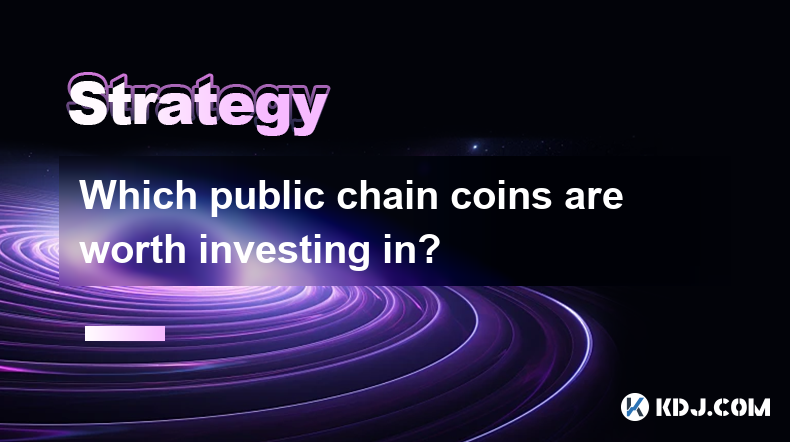
Key Points
- Evaluating Cryptocurrency Investments: Factors to Consider
- Top Public Chain Coins for Investment: Detailed Analyses
Article Content
Evaluating Cryptocurrency Investments: Factors to Consider
- Project Vision and Team: Assess the project's long-term goals, the team's experience, and their commitment to innovation.
- Technology and Innovation: Examine the underlying technology, its scalability, interoperability, and unique features.
- Market Demand and Adoption: Consider the coin's utility, its potential for mainstream adoption, and its current market share.
- Network Effect and Community: Evaluate the size of the coin's network and the strength of its community support.
- Liquidity and Volatility: Assess the coin's accessibility on exchanges, its trading volume, and its historical price volatility.
Top Public Chain Coins for Investment: Detailed Analyses
1. Ethereum (ETH)
- Vision and Team: Ethereum is a decentralized, open-source platform that allows for the creation of smart contracts, decentralized applications (dApps), and NFTs. Its team is led by Vitalik Buterin, a co-founder and visionary leader.
- Technology and Innovation: Ethereum utilizes a blockchain and smart contract technology to enable secure and immutable transactions. It supports a wide range of programming languages and features a robust ecosystem of dApps and developers.
- Market Demand and Adoption: Ethereum is the second-largest cryptocurrency by market cap and has strong adoption from institutional investors, developers, and users. It is widely used for DeFi, NFTs, and other blockchain-based applications.
- Network Effect and Community: Ethereum has a vast and growing network, with over 4 million active addresses and a highly engaged community.
- Liquidity and Volatility: ETH is highly liquid, trading on major exchanges with significant trading volume. It is known for its price volatility, but it has exhibited significant growth potential over time.
2. Binance Coin (BNB)
- Vision and Team: Binance Coin is the native token of the Binance exchange, the world's largest cryptocurrency exchange. It is led by Changpeng Zhao (CZ), a renowned entrepreneur and industry leader.
- Technology and Innovation: BNB operates on the Binance Chain and Binance Smart Chain, which are high-performance blockchains designed for fast and low-cost transactions. It facilitates trading, payments, and access to various services within the Binance ecosystem.
- Market Demand and Adoption: BNB has gained significant adoption as a payment method, utility token for Binance services, and investment asset. It is supported by Binance's vast user base and global reach.
- Network Effect and Community: Binance Coin has a strong network effect, leveraging the Binance ecosystem's large number of users, projects, and applications.
- Liquidity and Volatility: BNB is highly liquid, trading on Binance and other major exchanges with substantial trading volume. It exhibits price volatility, but it is generally more stable than some altcoins due to its utility and support from Binance.
3. Cardano (ADA)
- Vision and Team: Cardano is a proof-of-stake blockchain platform aiming to provide a secure and scalable foundation for dApps, smart contracts, and decentralized finance. Its team is led by Charles Hoskinson, a former Ethereum co-founder.
- Technology and Innovation: Cardano employs Ouroboros, an advanced proof-of-stake consensus mechanism, which claims to offer high security and energy efficiency. It also features a layered architecture and a rigorous development process.
- Market Demand and Adoption: Cardano has gained traction as a potential platform for enterprise solutions, DeFi, and stablecoins. It has partnerships with universities and research institutions to drive innovation and adoption.
- Network Effect and Community: Cardano has a growing network and an active community. Its development team engages regularly with the community, fostering a collaborative and supportive environment.
- Liquidity and Volatility: ADA is relatively liquid, trading on major exchanges. Its price volatility is typically moderate, as it has a strong community and a long-term focus on development.
4. Solana (SOL)
- Vision and Team: Solana is a high-performance blockchain platform optimized for speed, scalability, and low transaction costs. Its team is led by Anatoly Yakovenko, a former Qualcomm engineer.
- Technology and Innovation: Solana utilizes a novel proof-of-history consensus mechanism, along with parallelization and other optimizations to achieve fast and efficient transaction processing.
- Market Demand and Adoption: Solana has gained traction in DeFi, NFTs, and gaming applications. It has partnerships with major projects such as FTX and Serum, and its high throughput and low fees have attracted developers and users.
- Network Effect and Community: Solana has a rapidly growing network and an enthusiastic community. Its active ecosystem supports a range of projects, dApps, and initiatives.
- Liquidity and Volatility: SOL is highly liquid, trading on major exchanges. It is known for its price volatility, but it has exhibited significant growth potential due to its strong fundamentals and market demand.
5. Polkadot (DOT)
- Vision and Team: Polkadot is a scalable, multichain blockchain protocol that allows for the creation of interoperable blockchains and the transfer of assets between them. Its team is led by Gavin Wood, a co-founder of Ethereum.
- Technology and Innovation: Polkadot features a unique architecture that separates consensus and transaction processing, allowing for scalability and customization. It also provides interoperability between different blockchain networks.
- Market Demand and Adoption: Polkadot is gaining attention as a platform for cross-chain applications, DeFi, and enterprise solutions. Its interoperability and parachain model have attracted developers and projects looking to build scalable and interoperable blockchain solutions.
- Network Effect and Community: Polkadot has a growing network and an active community. It fosters collaboration among developers and projects to advance the multichain ecosystem.
- Liquidity and Volatility: DOT is relatively liquid, trading on major exchanges. Its price volatility is typically moderate, as it has a long-term focus on development and a strong community.
FAQs
Q1: What factors should be considered when choosing public chain coins for investment?
A1: Factors such as project vision, technology, market demand, network effect, liquidity, volatility, and the expertise of the team should be evaluated.
Q2: Which public chain coins are considered the top investments in the cryptocurrency market?
A2: Ethereum (ETH), Binance Coin (BNB), Cardano (ADA), Solana (SOL), and Polkadot (DOT) are among the top public chain coins with strong fundamentals and growth potential.
Q3: What are the risks associated with investing in public chain coins?
A3: Cryptocurrency investments carry risks, including price volatility, technology issues, regulatory changes, and security breaches.
Q4: How can investors minimize the risks of investing in public chain coins?
A4: Diversifying investments, conducting thorough research, understanding the technology and market dynamics, and implementing proper risk management strategies can help minimize risks.
Q5: What is the potential for growth in the public chain coin market?
A5: The public chain coin market has a high growth potential, driven by the increasing adoption of blockchain technology, decentralized finance (DeFi), and non-fungible tokens (NFTs).
Disclaimer:info@kdj.com
The information provided is not trading advice. kdj.com does not assume any responsibility for any investments made based on the information provided in this article. Cryptocurrencies are highly volatile and it is highly recommended that you invest with caution after thorough research!
If you believe that the content used on this website infringes your copyright, please contact us immediately (info@kdj.com) and we will delete it promptly.
- Crypto Presales in 2025: MAGACOIN FINANCE and the Hunt for New Coins
- 2025-06-27 04:50:12
- Bitcoin's Next Leap: Will It Hit a New All-Time High with Michaël van de Poppe's Prediction?
- 2025-06-27 05:50:12
- Litecoin Mining in 2025: Rigs, Returns, and the Rise of Cloud Mining
- 2025-06-27 05:10:12
- LINK's Holder Count Soars as ATH Predictions Heat Up: What's Next?
- 2025-06-27 05:30:12
- Dogecoin, Meme Coins, and Price Predictions: What's the Hype?
- 2025-06-27 05:50:12
- Senate, Bitcoin, and the Reserve: What's the Deal?
- 2025-06-27 04:30:12
Related knowledge
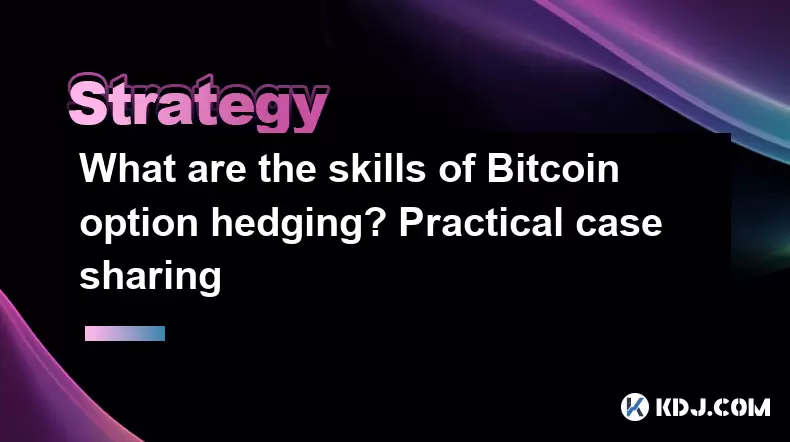
What are the skills of Bitcoin option hedging? Practical case sharing
Jun 24,2025 at 04:01pm
Understanding Bitcoin Option HedgingBitcoin option hedging is a risk management strategy used by traders and investors to protect their positions in the volatile cryptocurrency market. By using options, individuals can limit potential losses while retaining the opportunity for profit. In essence, it allows one to insulate against adverse price movements...
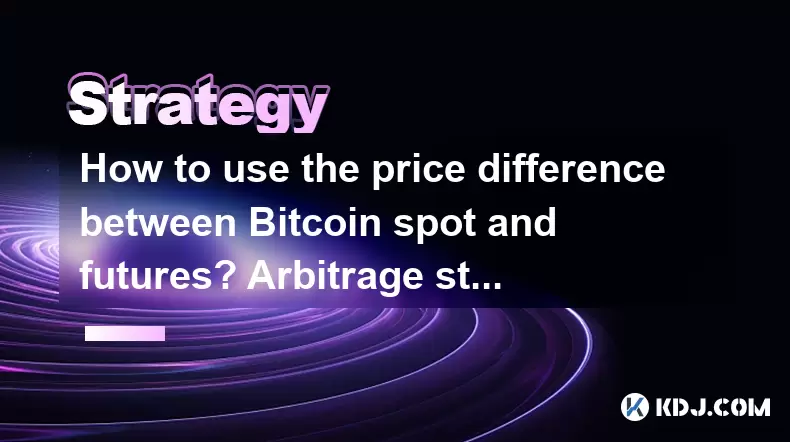
How to use the price difference between Bitcoin spot and futures? Arbitrage strategy
Jun 20,2025 at 02:56pm
Understanding Bitcoin Spot and Futures MarketsTo effectively leverage arbitrage opportunities between Bitcoin spot and futures markets, it's essential to understand the fundamental differences between these two types of markets. The spot market refers to the direct buying and selling of Bitcoin for immediate delivery at the current market price. In cont...
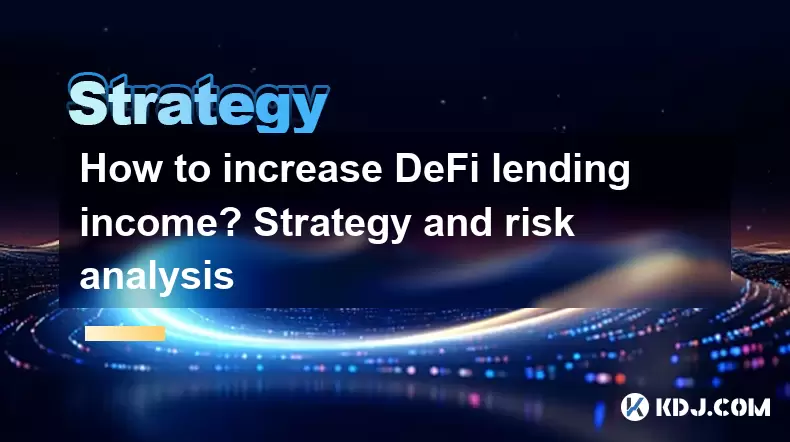
How to increase DeFi lending income? Strategy and risk analysis
Jun 24,2025 at 02:08pm
Understanding DeFi Lending and Its Income PotentialDeFi (Decentralized Finance) lending has emerged as a popular way to earn passive income in the cryptocurrency space. Unlike traditional banking systems, DeFi lending platforms allow users to lend their crypto assets directly to borrowers without intermediaries. The lenders earn interest based on the su...
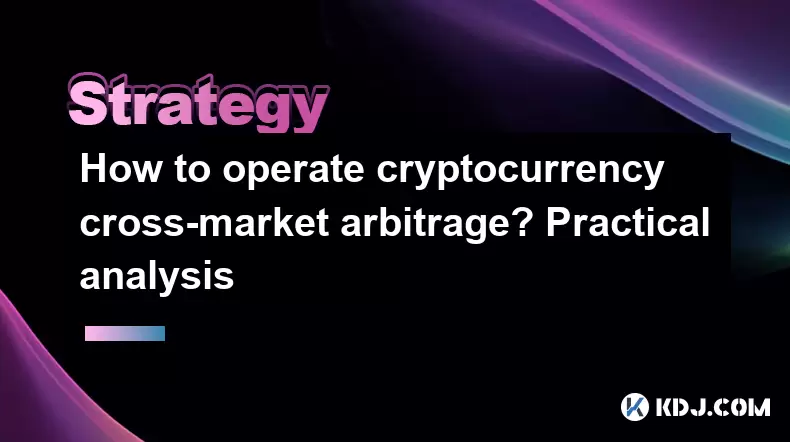
How to operate cryptocurrency cross-market arbitrage? Practical analysis
Jun 23,2025 at 04:01am
Understanding Cryptocurrency Cross-Market ArbitrageCryptocurrency cross-market arbitrage involves taking advantage of price differences for the same digital asset across different exchanges. The core idea is to buy low on one exchange and sell high on another, capturing the profit from the discrepancy. This strategy relies heavily on real-time market da...

How to make profits from high-frequency cryptocurrency trading? Sharing core skills
Jun 19,2025 at 05:07pm
Understanding High-Frequency Cryptocurrency TradingHigh-frequency trading (HFT) in the cryptocurrency market involves executing a large number of trades at extremely fast speeds, often within milliseconds. This method relies on small price discrepancies across exchanges or within a single exchange’s order book. Traders use complex algorithms and ultra-l...
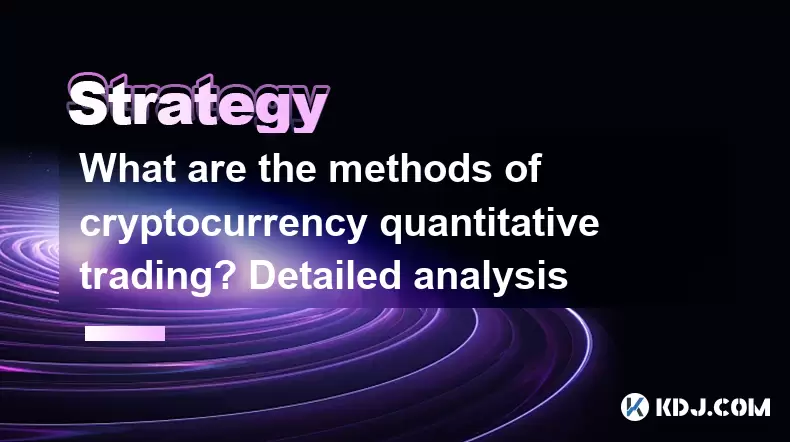
What are the methods of cryptocurrency quantitative trading? Detailed analysis
Jun 22,2025 at 11:07pm
Understanding the Core of Cryptocurrency Quantitative TradingCryptocurrency quantitative trading refers to the use of mathematical models and algorithms to execute trades in the digital asset market. Unlike traditional discretionary trading, which relies heavily on human judgment, quantitative trading leverages data-driven strategies to identify profita...

What are the skills of Bitcoin option hedging? Practical case sharing
Jun 24,2025 at 04:01pm
Understanding Bitcoin Option HedgingBitcoin option hedging is a risk management strategy used by traders and investors to protect their positions in the volatile cryptocurrency market. By using options, individuals can limit potential losses while retaining the opportunity for profit. In essence, it allows one to insulate against adverse price movements...

How to use the price difference between Bitcoin spot and futures? Arbitrage strategy
Jun 20,2025 at 02:56pm
Understanding Bitcoin Spot and Futures MarketsTo effectively leverage arbitrage opportunities between Bitcoin spot and futures markets, it's essential to understand the fundamental differences between these two types of markets. The spot market refers to the direct buying and selling of Bitcoin for immediate delivery at the current market price. In cont...

How to increase DeFi lending income? Strategy and risk analysis
Jun 24,2025 at 02:08pm
Understanding DeFi Lending and Its Income PotentialDeFi (Decentralized Finance) lending has emerged as a popular way to earn passive income in the cryptocurrency space. Unlike traditional banking systems, DeFi lending platforms allow users to lend their crypto assets directly to borrowers without intermediaries. The lenders earn interest based on the su...

How to operate cryptocurrency cross-market arbitrage? Practical analysis
Jun 23,2025 at 04:01am
Understanding Cryptocurrency Cross-Market ArbitrageCryptocurrency cross-market arbitrage involves taking advantage of price differences for the same digital asset across different exchanges. The core idea is to buy low on one exchange and sell high on another, capturing the profit from the discrepancy. This strategy relies heavily on real-time market da...

How to make profits from high-frequency cryptocurrency trading? Sharing core skills
Jun 19,2025 at 05:07pm
Understanding High-Frequency Cryptocurrency TradingHigh-frequency trading (HFT) in the cryptocurrency market involves executing a large number of trades at extremely fast speeds, often within milliseconds. This method relies on small price discrepancies across exchanges or within a single exchange’s order book. Traders use complex algorithms and ultra-l...

What are the methods of cryptocurrency quantitative trading? Detailed analysis
Jun 22,2025 at 11:07pm
Understanding the Core of Cryptocurrency Quantitative TradingCryptocurrency quantitative trading refers to the use of mathematical models and algorithms to execute trades in the digital asset market. Unlike traditional discretionary trading, which relies heavily on human judgment, quantitative trading leverages data-driven strategies to identify profita...
See all articles






















